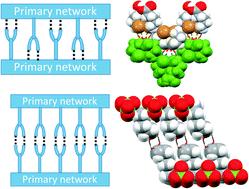当前位置:
X-MOL 学术
›
CrystEngComm
›
论文详情
Our official English website, www.x-mol.net, welcomes your
feedback! (Note: you will need to create a separate account there.)
Salts of 4-aminobutyric acid and 6-aminohexanoic acid behaving as molecular Velcro
CrystEngComm ( IF 2.6 ) Pub Date : 2017-10-31 00:00:00 , DOI: 10.1039/c7ce01597f M. Rademeyer 1, 2, 3, 4 , B. van der Westhuizen 1, 2, 3, 4
CrystEngComm ( IF 2.6 ) Pub Date : 2017-10-31 00:00:00 , DOI: 10.1039/c7ce01597f M. Rademeyer 1, 2, 3, 4 , B. van der Westhuizen 1, 2, 3, 4
Affiliation

|
The crystal structures of eight novel carboxyalkylammonium salts, (+H3N(CH2)nCOOH)X−, are reported, with n = 4 and X = Cl, Br and I in structures 1, 2 and 3, respectively, and n = 6 and X = Cl, Br·0.5H2O, Cl·0.5H2O, NO3 and ClO4 in structures 4, 5, 6, 7 and 8. The members of this family of compounds were found to display significant structural diversity, and a careful analysis of the structures employing the principles of crystal engineering was done to explain the observed trends and differences, specifically also the interdigitation or non-interdigitation of alkyl chains. It was found that a primary hydrogen bonding network formed between the ammonium groups and halide or oxo-anions, which plays a major structure-directing role. The structures may be likened to molecular Velcro, in which secondary hydrogen bonding interactions involving the carboxylic acid groups act as “hooks” to link primary networks.
中文翻译:

表现为分子尼龙搭扣的4-氨基丁酸和6-氨基己酸的盐
八个新颖carboxyalkylammonium盐的晶体结构,(+ ħ 3 N(CH 2)Ñ COOH)X - ,则报告,与Ñ = 4,X = Cl,Br和我在结构1,2和3分别和ñ = 6,X =氯,溴·0.5H 2 O,氯·0.5H 2 O,NO 3和C10 4在结构4,5,6,7和8。发现该化合物家族的成员显示出显着的结构多样性,并且使用晶体工程原理对结构进行了仔细的分析以解释观察到的趋势和差异,特别是烷基链的叉指或非叉指。发现在铵基团与卤化物或氧代阴离子之间形成了主要的氢键网络,其起主要的结构指导作用。该结构可以比作分子魔术贴,其中涉及羧酸基团的次级氢键相互作用充当连接主要网络的“钩”。
更新日期:2017-11-20
中文翻译:

表现为分子尼龙搭扣的4-氨基丁酸和6-氨基己酸的盐
八个新颖carboxyalkylammonium盐的晶体结构,(+ ħ 3 N(CH 2)Ñ COOH)X - ,则报告,与Ñ = 4,X = Cl,Br和我在结构1,2和3分别和ñ = 6,X =氯,溴·0.5H 2 O,氯·0.5H 2 O,NO 3和C10 4在结构4,5,6,7和8。发现该化合物家族的成员显示出显着的结构多样性,并且使用晶体工程原理对结构进行了仔细的分析以解释观察到的趋势和差异,特别是烷基链的叉指或非叉指。发现在铵基团与卤化物或氧代阴离子之间形成了主要的氢键网络,其起主要的结构指导作用。该结构可以比作分子魔术贴,其中涉及羧酸基团的次级氢键相互作用充当连接主要网络的“钩”。











































 京公网安备 11010802027423号
京公网安备 11010802027423号